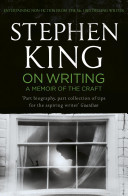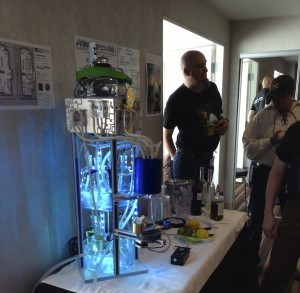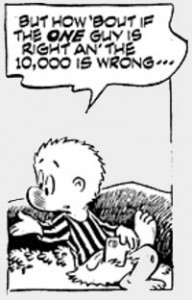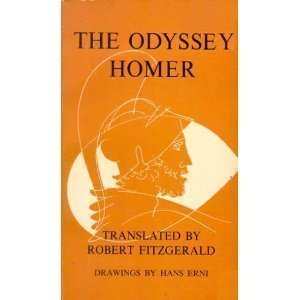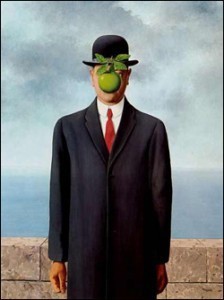Cat Rambo's Blog, page 63
February 9, 2014
Speculative Reminiscences: Weekly Recap for 2/9/2014
If you enjoyed "Tortoiseshell Cats Are Not Refundable" and are interested in finding out more about my online classes, click here!
There’s plenty of room left in my upcoming online classes.The first part of my Asimov’s story, All the Pretty Little Mermaids, is up online.
Kate Baker does a beautiful job with the audio version of “Tortoiseshell Cats are Not Refundable”
For Writers:
I blogged about Why I Don’t Want to Read Your Story
Please spread the word about this anthology from Brandon Bell and the impetus behind it.
Will I get to destroy fantasy? It remains to be seen. Last week for the Women Destroying SF Kickstarter. People have asked whether I plan to do open submissions for it, the answer is yes.
29 Problems Only Writers Will Understand
Locus has posted their recommended reading list for 2013.
SF Signal asks what’s wrong with epic fantasy
Elizabeth Bear is one of my favorite writers. Here’s an interview with her on Tor.com.
Books I talked about these books for You Should Read This:
A fabulous work about writing, On Writing by Stephen King
English comic novel Cold Comfort Farm by Stella Gibbons
Classic fantasy novel The Last Unicorn by Peter S. Beagle. No time to read it? Here’s the best quotes from it on GoodReads. Or here’s a picture of him and George R.R. Martin playing with stuffed animals.
Longtime American comic strip Pogo by Walt Kelly
Feminist spirituality guidebook 365 Goddess by Patricia Telesco
Classic epic work The Odyssey by Homer
Creative aid Surrealist Games
Things of Note:
SFWA has put together its own accessibility checklist for events
Are you warm right now? A lot of people aren’t.
Shades of Boneshaker, Batman! Seattle’s giant digging machine is broken
Timewasters!:
Via Wayne, a squirrel trying to bury a nut in a very odd place
. Well, the owl named after him.
io9.com lists some good February reading.
Lovely story by Natalia Theodoridou on Clarkesworld.
February 8, 2014
You Should Read This: On Writing by Stephen King
"Words create sentences; sentences create paragraphs; sometimes paragraphs quicken and begin to breathe." - Stephen King
When I taught at Hopkins, the students used to defiantly bring up King as an example of what they liked to read. It always surprised them when I said I liked him too. It feels like I’ve been reading Stephen King all my life. At least, for a very long time. He’s produced a lot of wonderful books, including one of my favorites, The Stand. In this book you get to see beneath the covers on a lot of those books.What: On Writing: A Memoir of the Craft by Stephen King is divided into two parts. The first is an autobiographical look at his writing over the years. It is unflinching and honest and well worth the read. The second is stuff about writing. It is also unflinching and honest and well worth the read.
Who: If you are a writer who buys writing books, it maybe impossible for you not to know about this book already. If you’re a writer who doesn’t read books about writing — this one’s worth picking up.
Why: Read this to become a better writer, or just to understand the craft better. King uses the metaphor of the writer’s toolbox, which is a very useful one.
I want to suggest that to write to your best abilities, it behooves you to construct your own toolbox and then build up enough muscle so you can carry it with you. Then, instead of looking at a hard job and getting discouraged, you will perhaps seize the correct tool and get immediately to work.
What goes in your toolbox? Vocabulary and punctuation. Point of view. Literary Devices. Foreshadowing. You get the picture.
When: Read this when you’re feeling a bit starved for the muse and want to be reminded that writing is a matter of work, not divine inspiration.
Where and how: Read it with pen in hand, ready to underline and make notes that apply to your own writing. Read it with King’s books close by, so you can reach for them and see his principles played out in their pages.
#sfwapro
February 7, 2014
You Should Read This: Cold Comfort Farm by Stella Gibbons
Cold Comfort Farm was Stella Gibbons' first novel but not her last - 22 other literary works followed it.
Another adequate movie that was a brilliant book. I came to Cold Comfort Farm having seen it referenced somewhere as a comic novel. It was that, in spades.What: Cold Comfort Farm by Stella Gibbons was published in 1932. It’s a send-up of all the books of the time romanticizing the rural life. It references many of the popular novels of its time, adding a layer of appreciation if you’re familiar with that work, but it isn’t necessary to know that much order to enjoy it.
Who: People who enjoy English humor at its subtlest will particularly enjoy Cold Comfort Farm, as will those familiar with the literature of the time. And, if you are a woman who has ever been hit on by a particular type of academic male, you will recognize Mr. Mybug and glory in the very very accurate portrayal of a man soaked in nature’s fecund blessing.
Why: If you’re considering writing humor, this is an excellent book to take a look at for its myriad of different strategies, including a very accurate send-up of the ways dialect are often portrayed. At the same time, it remains an interesting and engaging story.
When: Read this when you want a little humor and charm. Read it when you have been too long among the self-important, and need to see them skewered a little.
Where and how: Don’t read it in the woodshed; there’s something nasty in there.
#sfwapro
February 6, 2014
SFWA Accessibility Guidelines: What They Are and Why They Matter
One thing that did surprise me was the lack of provision for robots, such as this one, enslaved in the SFWA suite at the Nebulas and forced to serve its human captors with cocktails. Should I become SFWA Vice President this year, I pledge that no robot will be left behind.
The SFWA Board recently passed an Accessibility Guidelines Checklist, which will be used at all SFWA-sponsored events. That includes things like the Nebulas, the NY Meet and Greet, etc. Along with passing them, the board passed a provision that every time they get used at such an event, someone sits down afterward and checks to make sure they worked well and don’t need to be adjusted.One reason I think this is great is that I’ve seen a lot of conventions lately — among the largest around — that have dropped the ball as far as accessibility goes. I’ve seen con participants treated shabbily and shamefully, even to the point where participants from other, more mundane conventions and gatherings end up stepping up to help up the F&SF fans. It’s great to see SFWA leading by example by using such a set of guidelines as well as making it available to conventions who might find it a useful resource.
So here’s what the checklist involves:
There must be an accessibility liaison who is a member of the committee or event staff and who understands accessibility issues, resources, and solutions.
There must be wheelchair accessible cabs and lift-equipped shuttle vans available between airport and hotel. If the hotel has shuttle service, it must include lift-equipped vans or arrange for such a service.
The hotel must have a convenient drop-off and pick-up point, with an accessible route to the entrance no more than 200 feet away.
The hotel must be within two blocks of a bus stop or train, as well as reachable by car.
The hotel entrance must be wheel-chair accessible and have accessible parking spaces nearby. Non-accessible entrances should have signs pointing to an accessible one.
Hotel public spaces (restaurants and bars) must be wheel-chair accessible. At least one should be serving breakfast, lunch, and dinner during the event.
Hotel must provide wheelchair-accessible hotel rooms.
There must be wheelchair-accessible restaurants within a couple of blocks that people can get to.
Lots of minor stuff like clearly identified accessible exits, Braille or raised characters in the elevators, audible and visual alarm signals, evacuation plan that includes people with disabilities, at least one TTY-equipped public telephone, and water fountains that are wheelchair-accessible or have a cup dispenser.
The event functions must be in the host hotel or someplace easy to get to and within two blocks. You should be able to get to them in an elevator and restrooms should be wheelchair accessible.
Stages and raised platforms for banquets, presentations, and panels must be wheelchair-accessible with lifts or ramps.
Banquet, presentation, and panel seating must leave space for wheelchairs and scooters, and provide seating near the stage for visually and hearing-impaired attendees.
Video content must be closed captioned, assistive listening devices should be available, lighting should be adequate, and an ASL interpreter should be available.
If there are hearing-impaired panelists, the moderator and panel must meet beforehand to make sure they know best how to accommodate the panelist.
If someone needs a caretaker/assistant, the caretaker’s registration is comped.
Service animals are permitted in all hotel and convention spaces.
Wherever food is served, it must be labeled for common triggers like dairy, shellfish, nuts, eggs, etc, and alternate selections will be provided.
A lot of this is common sense, but it’s great to have a checklist that a new convention can go through item by item.
Why does this matter? Because this is the sort of thing that SFWA should be doing (among LOTS of other stuff, like adapting to the new world of self-publishing and writing for electronic media, yes, yes). It leads by example, creating a set of standard for its own events, and offering them up to the community for their own use. It’s a move that encourages diversity by making sure disabled writers know that they’re a valued part of the membership and also makes sure that they can get to and enjoy SFWA events.
So yay SFWA! More of this, please. 
You Should Read This: The Last Unicorn by Peter S. Beagle
"As for you and your heart and the things you said and didn't say, she will remember them all when men are fairy tales in books written by rabbits.” ― Peter S. Beagle, The Last Unicorn
Not the movie. No, that was an okay movie, but this book? It’s pure gold. It’s beautiful. It’s enchanting. You should read it.What: The Last Unicorn is, as you would expect, the story of the last unicorn. She must find out what has happened to the other unicorns, aided by a fraudulent magician, a fierce butterfly, and a would-be Maid Marian. You’ve formed a story in your head from reading that last sentence. The book is nothing like that. It’s better.
Who: I do not think anyone should call themselves a fantasy writer that has not read this. I’m sure there are reasonable exceptions. But I’m not seeing any of them.
Why: Read this for characters that will tangle themselves up in your heart and never let go. Read it for Beagle’s skill with prose, the sly humor, the sheer beauty.
When: Don’t read this when you are feeling insecure about your own writing, because it will only make it more so. Read it for inspiration as well as entertainment.
Where and how: Copy passages out and try to figure out how Beagle DID that. How the butterfly enchants us in only a few sentences. How the Bull menaces in even less space. (Be aware that Beagle did write about some of these characters again; they appear in novelette “Two Hearts,” which I only see available in The Nebula Award Showcase 2008 and #sfwapro
February 5, 2014
You Should Read This: Walt Kelly’s Pogo
Reading idiosyncratic dialogue like that of Pogo and his peers is key to learning how to craft that kind of dialogue yourself. If you're interested in a workshop aimed at helping with dialogue, check out my online classes.
Pogo the Possum was created by Walt Kelly in 1943, continuing on for 32 years (two year past Kelly’s own death). It’s a lovely cartoon, involving the denizens of a swamp: possums, skunks, turtles, squirrels, mice, alligators, and more. They live their lives, which sometimes oddly echo our own, or rather the politics of their time in which they were written, commenting on J. Edgar Hoover, McCarthyism, and muckracking.What: Pogo is a comic strip. You can find plenty of compendiums for sale or you can seek out samples on some of the online sites devoted to Walt Kelly’s work.
Who: Writers interested in twisting language to their own ends should seek out Pogo, in whose pages it is beautifully wonderfully made coherent gibberish that delights the ear and cries out to be read aloud. Here, for example, is a Christmas carol that’s been Pogo-fied:
Deck us all with Boston Charlie,
Walla Walla, Wash., an’ Kalamazoo!
Nora’s freezin’ on the trolley,
Swaller dollar cauliflower alley-garoo!
Don’t we know archaic barrel
Lullaby Lilla Boy, Louisville Lou?
Trolley Molly don’t love Harold,
Boola boola Pensacoola hullabaloo!
Bark us all bow-wows of folly,
Polly wolly cracker ‘n’ too-da-loo!
Donkey Bonny brays a carol,
Antelope Cantaloupe, ‘lope with you!
Hunky Dory’s pop is lolly,
Gaggin’ on the wagon, Willy, folly go through!
Chollie’s collie barks at Barrow,
Harum scarum five alarum bung-a-loo!
Dunk us all in bowls of barley,
Hinky dinky dink an’ polly voo!
Chilly Filly’s name is Chollie,
Chollie Filly’s jolly chilly view halloo!
Bark us all bow-wows of folly,
Double-bubble, toyland trouble! Woof, woof, woof!
Tizzy seas on melon collie!
Dibble-dabble, scribble-scrabble! Goof, goof, goof!
Why: Read it because of the way gentle humor, sharp political insight, and sometimes grave disappointment in the state of America have all been combined in the lives of a cast of characters that manages to combine charm and cynicism.
When: Read it when you want some new characters to people the chambers of your head: earnest Pogo, the scowling Porkypine, too ingenious for his own good Albert the Alligator, and wanna-be trickster Churchy Lafemme.
Where and how: Read it somewhere that you can laugh freely and smile to yourself or even read a scrap (maybe more) aloud just to hear the cadences.
#sfwapro
February 4, 2014
You Should Read This: 365 Goddess by Patricia Telesco
 This is not so much a you should read this particular book, as a you should read something like this, and you should read it in a very particular way.
This is not so much a you should read this particular book, as a you should read something like this, and you should read it in a very particular way.
What: 365 Goddess: A Daily Guide to the Magic and Inspiration of the Goddess by Patricia Telesco presents a goddess a day to take you through a year of them. Each is briefly described along with her themes and symbols and ways to remember that goddess during the day.
Who: Anyone searching for creativity should pick up this practice, whether or not you use this book. Find something that provides a daily seed — perhaps the I Ching, or Tarot cards, or inspirational poetry — and make meditation on it part of your daily practice.
Why: Because some daily touchstone like this gives additional structure and depth to your day. And, with this particular book, you will find fresh stories and influences.
When: Early in the day. Open it up to today and look to see what goddess is invoked. Reflect on what she stands for, her story, her associated colors, animals, fruits, flowers, and traditions.
Where and how: Read it mindfully, not skimming. If each day you focus on something like this, it will spur stories and ideas. You’ll notice things that you wouldn’t have noticed otherwise. If a figure pulls you, read further, deeper, wider about that goddess and see what stories she brings you.
#sfwapro
February 3, 2014
Why I Don’t Want to Read Your Story
Colette's husband allegedly locked her in an attic to keep her focused on her writing. Somedays this seems like an enviable solution.
I get a lot of requests to look at people’s stories. Sometimes people just send them to me. This has prompted this post, but it is not directed at any specific recent requests. (I should note that this is different than my offer to read for awards – I’m happy to read those.) I’m talking about stories of the still unpublished variety.I’m sorry. I really am. I know it’s a great story. But here’s some reasons why I’m not thrilled by your offer to let me read it.
I do read fast, but I have a lot to read. I’m reading for the Norton Award this year, which has meant an onslaught of books. I’m reading to stay abreast of the field and so I can make intelligent reading decisions. And I’m reading for my own pleasure.
You’re not asking me to read it, really, but also to critique it. That takes time, and even just a little crit is a piranha-like bite out of a day already besieged.
You’re asking me to do it for free. I charge to critique stories. Right now I’m not taking any, because I want to focus on my own work. The same goes for Kickstarters asking me for crits as donation incentives this year. I got bit in the butt with a bunch of these all at once, and it’s just not working for me. I’ll revisit this policy in 2015.
You may not want to hear what I have to say. A few years ago someone pressed a manuscript in my hands, and I took the time to go through it pretty thoroughly and explain why it wasn’t ready for primetime and what changes needed to be made. The recipient made it clear that he’d been wanting to hear praise and market suggestions. That was a bit discouraging.
I am not in a position to publish your story. If that’s what you’re hoping, I’m not currently editing a magazine and the couple of editing projects I have coming up are pretty specific in theme. It is extremely unlikely that I will read your story, shout “Huzzah!” and send it off to another editor saying they should buy it.
If you absolutely must have me read your story, you do have the option of taking my workshop. I offer plenty of classes and there’s new sections of both the Writing F&SF Stories and the Advanced Workshop opening soon.
This is hard for me because I have a difficult time saying no to requests. But they add up into vast piles of undone work that dampen all productive effort. So despite all the convulsions and pain this is causing my inner Midwesterner, who desperately wants to be polite… save us both the trouble and send it to your crit group. At least for now. Okay?
You Should Read This: The Odyssey by Homer
Sing in me, Muse, and through me tell the story of that man skilled in all ways of contending, the wanderer, harried for years on end, after he plundered the stronghold on the proud height of Troy.
I read The Odyssey in college. I’d been aware of it before then, in that way any bright teen reader is: one runs into its figures here and there or else the whole thing gets boiled down into a chapter in a book on Greek mythology. (I believe I’d also seen it referenced in Ray Harryhausen movies.)I read it for a class, one of the brief ones squeezed in between semesters, a one-credit class called On the Road, which focused on (naturally enough) stories of the road, including Kerouac’s book.
What: The Odyssey is the story of Odysseus as he makes his way back through a series of dangerous encounters to his wife Penelope, who is facing off dangers of her own at home.
Who: Anyone who wants to be familiar with one of the fountains so many stories, in so many art forms, are drawn from should read this.
Why: Because it’s a classic. It’s good for you AND it’s a really good story.
When: Read it when you want to return to the bones of writing. Read it in conjunction with Robert Grave’s Homer’s Daughter, which posits a different author for it.
Where and how: Read it aloud, the way it’s meant to be heard. Read it in one of the many good translations that treat it like the poetry it is, such as Robert Fitzgerald’s. Or if you’re privileged enough to know ancient Greek, let it sing to you in that form.
#sfwapro
February 2, 2014
You Should Read This: Surrealist Games
I use some surrealist techniques in the Literary Techniques for Genre Fiction class. Check it out if you're interested in adding more depth or texture to your writing.
I’ve been carrying this book around since days in Baltimore, when my ex gave it to me as a Valentine. It came in a charming little boxed set complete with temporary tattoo. Nowadays I have several real tattoos but I still draw on this book, particularly for the Literary Techniques in Speculative Fiction class.What: Surrealist Games, compiled and presented by Alastair Brotchie is a compedium of games played by members of the Surrealist movement along with illustrations and surrealist quotes. Games include echo poems, provocations, and oral description of objects perceived by touch.
Who: Any writer is the better for a little dose of surreality from time to time, and any forays into the book will yield a few interesting phrases at the least, or perhaps even a whole new mind.
Why: Read it to find some writing games that you can play solo or with similarly-verbally-minded friends. Read it for the equivalent of a poetic whack upside the head. Read it for the creative sparks flung out by its pages.
When: Read it at a time dictated by the roll of a die or the motions of a lizard on the wall.
Where and how: Graze through the pictures and see what inspiration leaps from the paper to your brain. Don’t treat it like a manual, working your way through game 1, game 2, game so on. Instead, let it fall open and see where chance takes you.
#sfwapro


